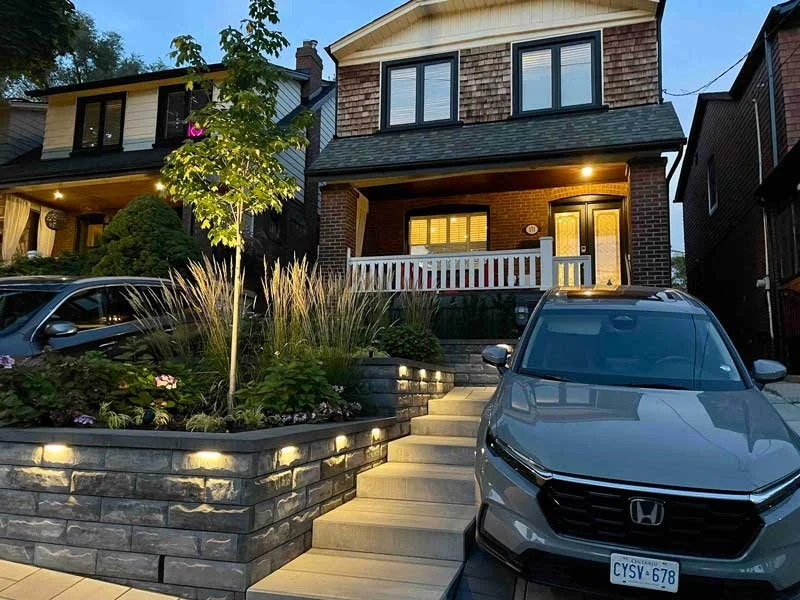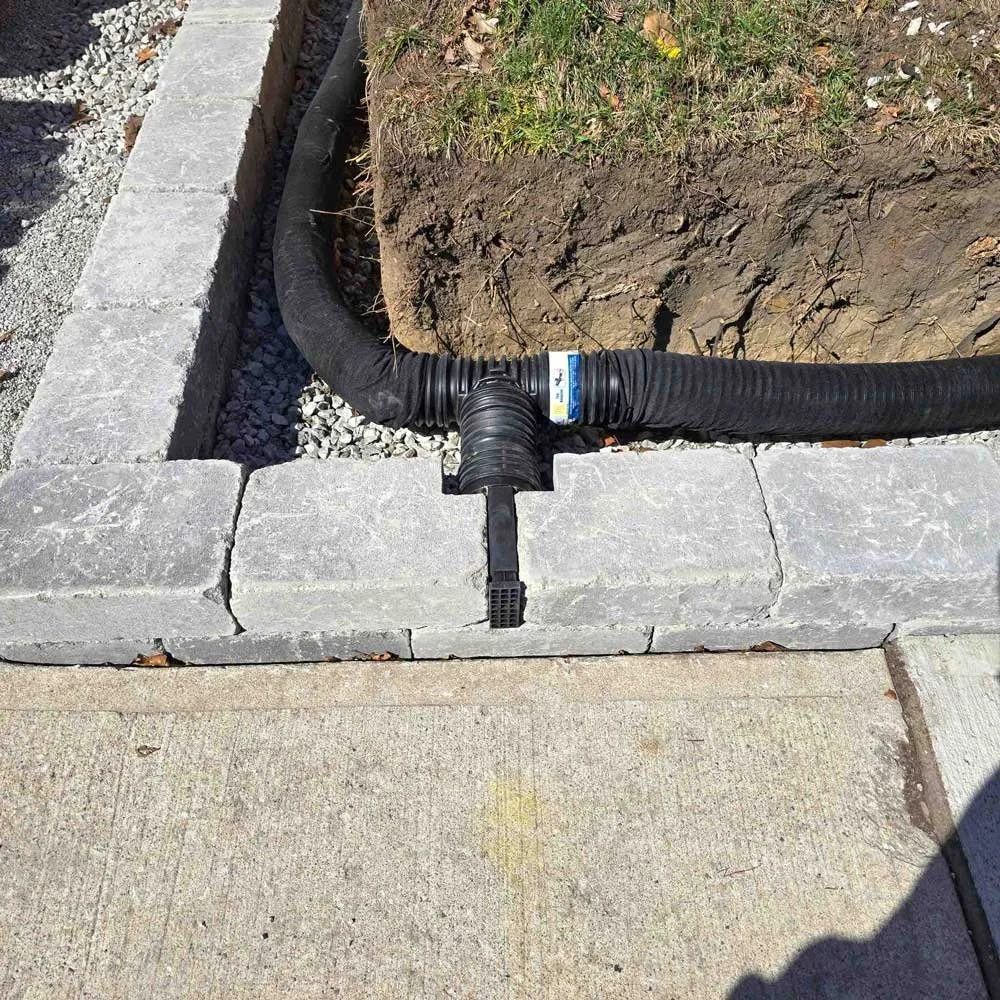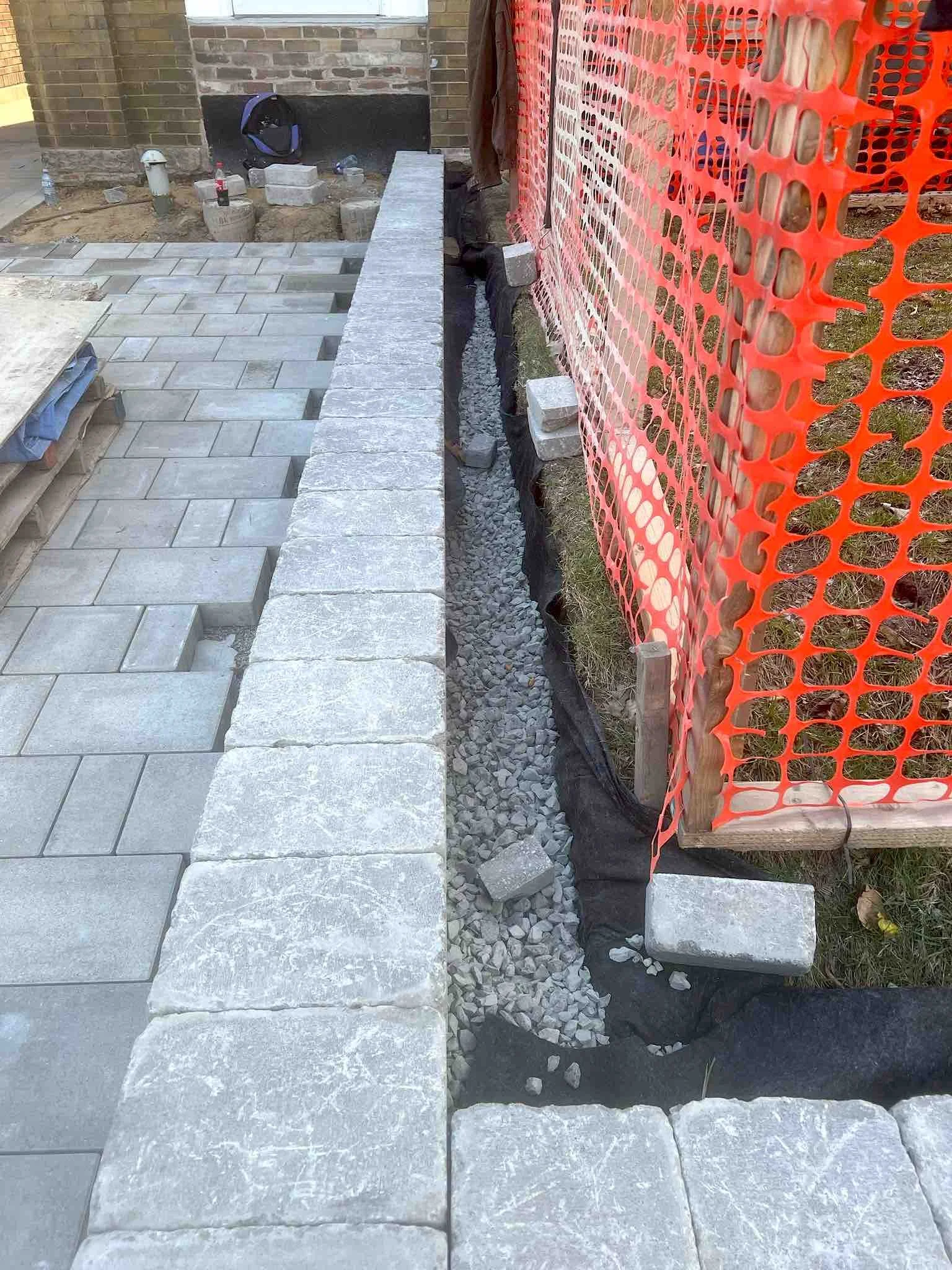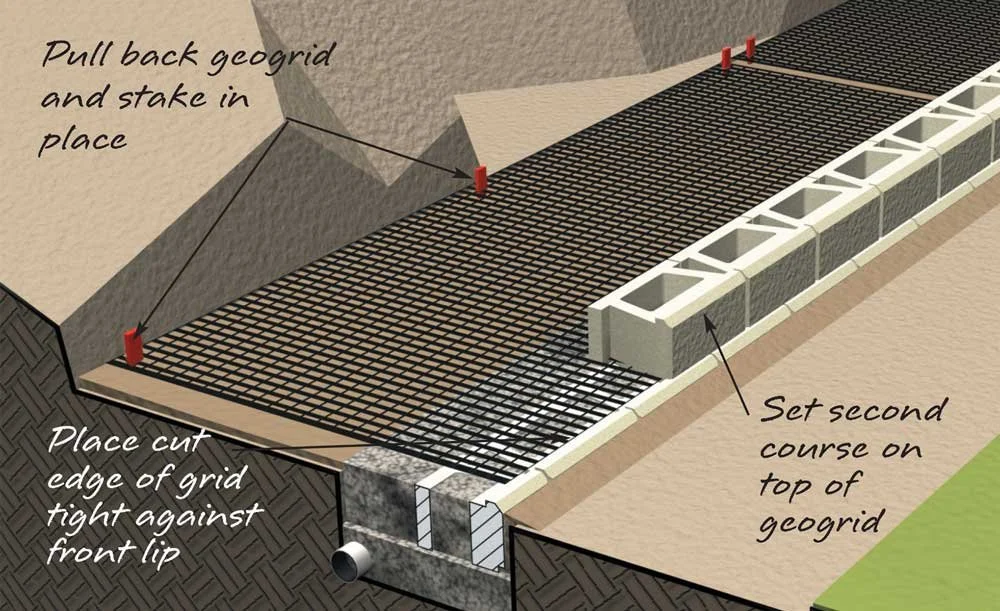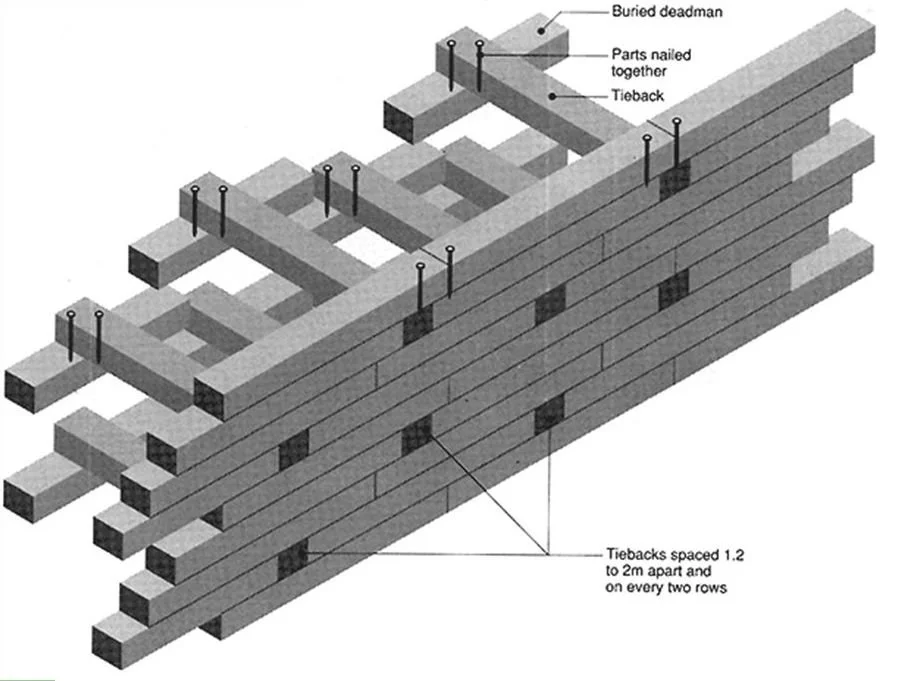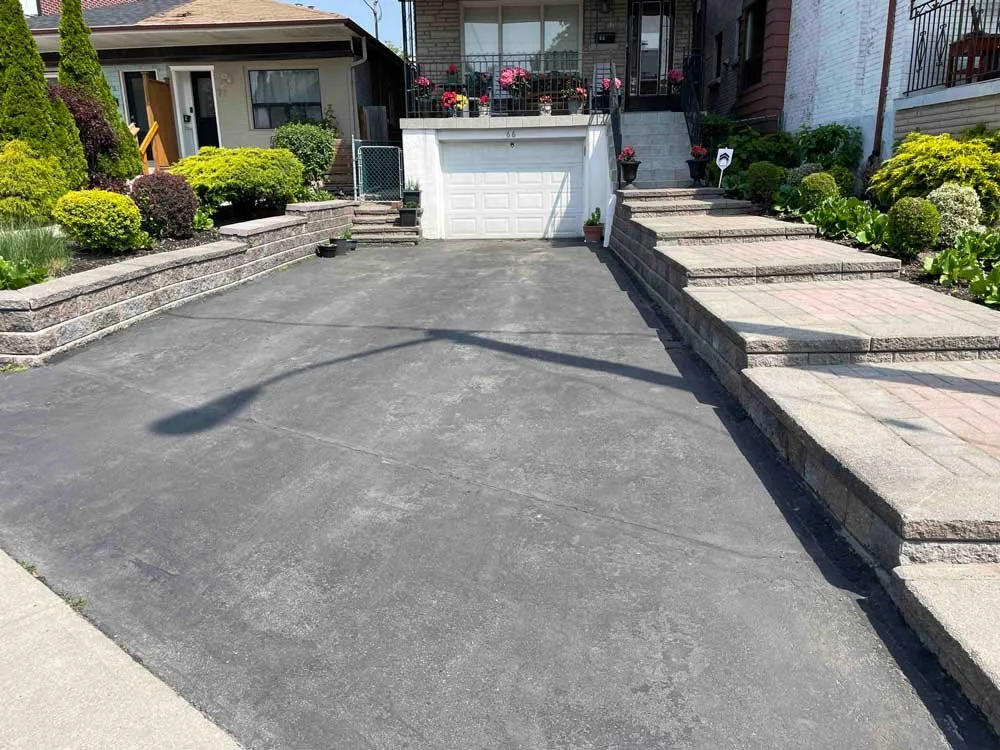How to Build a Retaining Wall Properly (And Why Most Fail)
Retaining wall construction is one of the most commonly botched jobs in landscaping. It’s no wonder I had a homeowner say to me recently, “I don’t want a retaining wall in my front yard. They always seem to fall over.” Sadly, she’s not wrong—many retaining walls fail prematurely.
But the reason isn’t the concept. It’s the execution. Most walls fail because they’re not built properly, either due to lack of knowledge or cost-cutting by inexperienced contractors.
In this article, I’ll walk you through how to build a retaining wall properly, why so many fail, and what to look out for—whether you're a homeowner or a contractor.
Common Retaining Wall Construction Mistakes
A retaining wall is more than just stacked stone or timber. It’s an engineered structure that must hold back tons of soil and water. When it's done right, it lasts for decades. When it's done wrong, it starts to lean within a year or two.
1. Not Burying the Base Course Deep Enough
A proper retaining wall needs to be buried into the ground. As a rule of thumb, at least 10% of the wall’s height should be buried—plus one full base block or tie.
I see too many walls sitting right on the surface or a half course below grade. No base = no stability.
If there is a steep slope in front of the wall, the wall must be buried even deeper to prevent it from sliding out.
2. No Drainage Behind the Wall
This is the #1 reason retaining walls collapse. Water builds up behind the wall, creating hydrostatic pressure. That pressure pushes the wall forward, or causes it to crack if it's a poured-in-place concrete wall .
Every retaining wall needs:
12 inches of 3/4” clear gravel backfill directly behind it (not just soil)
Filter fabric between gravel and native soil to stop fines from clogging the gravel
Weeping tile (perforated drain pipe) at the base
A drain outlet to let water escape—ideally out through the front of the wall or into a soakaway pit
No outlet = trapped water = guaranteed failure
Weeping tile connected to a front-facing drain allows water to escape from behind the retaining wall, preventing hydrostatic pressure buildup.
3/4” clear gravel backfill behind the retaining wall, separated from native soil by geotextile filter fabric to ensure proper drainage and prevent contamination.
3. No Geogrid Reinforcement for Taller Walls
Retaining wall blocks come with manufacturer-approved height limits. If you build taller than that—or if the wall supports a slope, a car, or a structure—you’ll need geogrid or a larger format retaining wall system.
Geogrid is a high-tensile mesh that locks the wall to the soil behind it. It gets layered in every few courses and extends several feet back.
Without it, taller walls will lean and eventually collapse.
Geogrid reinforcement installed behind a retaining wall to stabilize soil and provide structural support—an essential step in proper wall construction.
4. Timber Walls Without Proper Tiebacks or Deadmen
Wood tie retaining walls can be strong, but only if they’re built with tiebacks and deadmen—long cross members that anchor into the slope behind the wall. Built properly there is a lot of timber you can’t see buried behind the wall.
Many timber walls I see built by homeowners are just stacked landscape ties with rebar or spikes—that’s not structural. Or they have insufficient numbers of tiebacks, and usually no deadmen. The ones built by contractors often have an inadequate number of tiebacks and likely no deadmen.
I typically put tiebacks every 8 feet, on every other course, starting on the 3rd course.
Timber walls without tiebacks and deadmen are doomed to fail.
Cross-section of a timber retaining wall showing correct placement of tiebacks and deadmen—critical for long-term structural stability.
5. Ignoring Surcharge Loads
A surcharge is any additional load pressing down behind the wall—like:
A vehicle parked on or near the wall
A sloped lawn draining water to the wall
A hot tub, shed or large planter above it
Walls supporting surcharge loads must be reinforced:
Thicker base and wall materials
Deeper buried course
Extra gravel and drainage
More geogrid layers
If you don’t plan for surcharge, your wall won't hold.
The Importance of Retaining Wall Drainage: A Real Example
While driving through a residential neighborhood this Spring, I saw two retaining walls flanking the same driveway. Same height. Same material. But only one was failing.
The difference? Drainage.
The failing wall had no protection from water above. Rain flowed directly into the backfill, and almost certainly no drainage was installed, and I didn’t see any exit drain.
The wall that was holding strong on the other side of the driveway had a paver walkway behind it. That hardscape surface kept water out of the backfill and acted as a natural drainage barrier.
Water is the silent killer of retaining walls. You either control it—or it controls you.
Leaning retaining wall showing clear signs of failure caused by lack of drainage and absence of an outlet for water to escape.
Retaining wall on the opposite side remains structurally sound—protected by a paver walkway that prevents water from seeping in behind.
What Makes a Retaining Wall Last?
A long-lasting retaining wall isn’t about looks. It’s about what's behind and beneath it:
Deep, compacted gravel base
Proper drainage system
Weeping tile with a clear outlet
Geogrid when height or load requires it
Surcharge planning
Correct burying of the first course
Tiebacks for timber walls
Skip any one of these and you're gambling with gravity.
Final Thoughts: Build It Once. Build It Right.
Contractors often cut corners to win a job or make a better margin. Drainage and geogrid are the first things to get “value engineered” out of a budget.
But here’s the truth: cheaply bid walls are more expensive. They’ll need to be repaired or rebuilt in a few years—this time around at the right price.
So when a client tells me they’re sceptical about retaining walls, I tell them what I’ve seen with my own eyes:
It’s not that walls can’t last—it’s that most aren’t built right.
Frequently Asked Questions About Retaining Walls
How deep should a retaining wall be buried?
At least 10% of the wall height, plus the entire base course.
Do small retaining walls need drainage?
Yes. Even a 2-foot wall can fail without proper drainage.
What is geogrid and when is it needed?
Geogrid is a synthetic mesh that reinforces taller walls by tying them into the soil behind. It's essential for walls above 3-4 feet or those supporting extra weight.
Why do timber retaining walls fall over?
Always due to missing tiebacks and deadmen, which anchor the wall back into the slope.
Can a retaining wall support a parked car?
Yes—but only if engineered correctly with extra reinforcement, proper base, and geogrid.
Need a Wall That Won’t Fail?
Contact us for professional retaining wall design and installation that lasts. We do it right—because we’ve seen what happens when it’s not.

